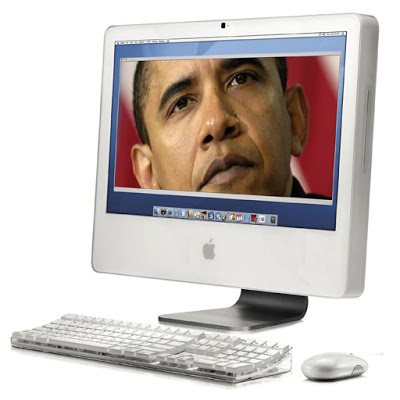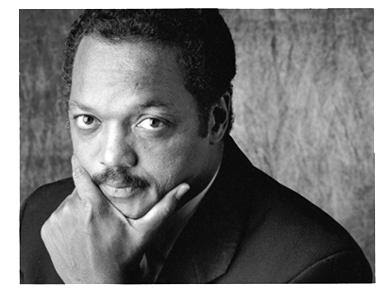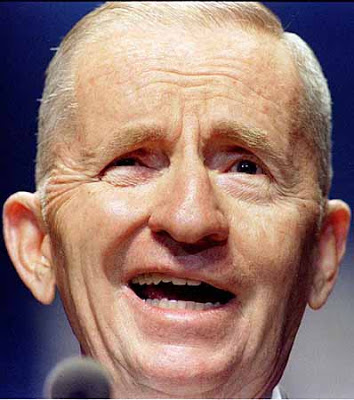
Obama’s Organization, and the Future of American Politics
By Micah L. Sifry / June 8, 2008
Barack Obama’s victory over Hillary Clinton is the first time an insurgent has beaten the establishment candidate in the Democratic primaries since Jimmy Carter in 1976. This is interesting and important for all kinds of reasons. One, as I’ve written before, is that it suggests that the era of Big Money and Big Media pre-selecting the nominee of the Democratic party may well be over, in no small part because of the affordances brought by the internet: lower costs of communication and collaboration, and less allowances for hypocrisy and dishonesty in campaigns.
But there’s another big reason why Obama’s victory is so important. He is riding herd on the largest and most potent new political organization anyone has seen on the American landscape in at least sixteen years. He’s probably got anywhere from four to eight million email addresses on top of his 1.5 million donors and 800,000 registered users of my.barackobama.com, his social networking platform.
What happens with this organization if Obama wins? What will he do with it? And what will it do with him? For us here at techPresident, a website that is focused on how the candidates are using the web, and the web is using them, by the time November rolls around, this could be the billion-dollar question.
This isn’t the first time this question has arisen in modern American politics, by the way. And usually the answer is “Meet the New Boss, Same as the Old Boss.” It’s just that the internet should force us to think about the possibilities of a different answer. Not only that, I think Obama is thinking about a different answer.
The Movement or the Man?
In almost every presidential election, one or more of the campaigns, sometimes that of the winner, and often that of a powerful but ultimately unsuccessful insurgent, has the effect of drawing thousands or tens of thousands of new political activists into the process.
There are three campaigns that I’ve spent a lot of my life in journalism writing about: Jesse Jackson in 1984 and 1988; Ross Perot in 1992 and 1996; and Howard Dean in 2004. In each case, a charismatic candidate with a powerful message drew a ton of new activist energy into the process. And in each case, the movement and the man faced a moment of truth: is this about you, or the larger movement?
If Obama wins in November, the question will loom larger for one critical reason: because his supporters have the capacity to self-organize on a scale never seen before in our lifetimes. (If you question that, go read Clay Shirky’s great new book, Here Comes Everybody.) To see what I mean by this, allow me to take you on a short history lesson.
In 1988, Jesse Jackson went to the Democratic convention in Atlanta with about a third of the delegates and enough energy to force Michael Dukakis to give him a starring moment on the stage, side-by-side with Dukakis’ far more conservative running-mate Lloyd Bentsen. At the time, there were Rainbow Coalition chapters in many states, and some activists were talking about converting those chapters into a formal ongoing structure for progressive activism inside and outside the Democratic party. This was not to be. Dukakis bought Jackson off with a campaign plane, salving the Reverend’s personal ego, and Jackson himself didn’t want the Rainbow Coalition to develop into an independent, bottom-up organization.
So while his candidacy helped seed a number of successful bids for power by African-America politicians in 1989 and 1990 (like David Dinkins’ campaign for mayor of New York City), the Jesse Jackson movement of 1988 never was allowed to become an ongoing people-powered movement from below. I’ll have to dig out my files to flesh out the picture, but you can take my word for it: Jackson only wanted to maintain a “campaign-in-waiting” organizational structure that would be totally controlled by him. He and his minions actively worked to snuff out independent Rainbow Coalition chapters in the states. And thus, for all the popular mobilization that Jesse Jackson galvanized in 1988, there was little to speak of a year or two later beyond a shell organization using the name Rainbow Coalition under Jackson’s control. It would hold meetings (like the one in 1992 where candidate Bill Clinton attacked rapper “Sista Souljah”), but the base was gone, back into the woodwork.
In Perot’s case, the story is even worse. After the tiny Texan got 20 million votes in the 1992 election, he called on his followers to push for his reform agenda by joining United We Stand America, promising them, “I’m Ross, You’re the Boss.” More than two million people joined UWSA in 1993, each paying annual dues of $15 a year. If you know anything about the hollowing out of civic organization (read Robert Putnam’s Bowling Alone), you know that a membership organization with 2-million-plus dues-paying members is a rare beast in American politics.
But Perot, as we all know, was a control freak. His candidacy may have inspired millions of reform-minded Americans to come out of the woodwork, put their own “skin in the game” to get him on the ballot, but Ross didn’t know any other way but to be the Boss. He hired ex-military men to take over his state petition drives, and once UWSA got going, tried to impose strict controls on its volunteer state directors. I put out a little newsletter during those years called The Perot Periodical, and we reported chapter and verse on how Perot and his “white shirts” put the boot down on his grassroots. By the summer of 1995, when Perot decided to form a third party, the Reform Party, much of his grassroots movement was decimated. Again, the man won out over the movement.
It’s not insignificant, I think, that the 1988-90 snuffing of the Rainbow Coalition movement and the 1992-95 snuffing of the Perot movement both happened before the mass participation internet. Yes, there were email lists in existence, and indeed I watched the Perot movement struggle to maintain its independence from Ross’s lieutenants in part by reading the Usenet group alt.politics.perot. But not enough people were using these tools, and the tools weren’t robust enough to defeat the centralized and well-financed Dallas operation run by Perot.
Dean 2004: Networked Politics on the Rise
Fast forward to February 2004. The Howard Dean campaign has collapsed in the wake of its failure in Iowa. Joe Trippi comes to speak at the Digital Democracy Teach-In in San Diego, a day before the annual ETech conference. I stand up to ask Joe, “Who owns the list, Joe? What is going to happen to Dean for America?” Six hundred thousand people had come together to propel Vermont’s governor to front-runner status, and now it was all about to go away. Trippi answered that he didn’t know what would happen to the list. But he was already thinking about the possibilities, and had registered the url “changeforamerica.com” in the hopes of keeping the Dean movement going.
Well, we all know what happened afterwards. The Dean campaign list was used to spawn DemocracyforAmerica, and Howard gave the reigns to his brother Jim once he became DNC chair. DfA has kept going, with active chapters around the country, and a respectable amount of organizing and fundraising on behalf of Dean-like candidates for various levels of political office. It’s not a game changer, but it is definitely something a bit more like an ongoing, people-powered organization than either the Jackson or Perot successor groups.
So, with all this history in mind, let’s return to the billion-dollar question: What happens with the Obama organization if Obama wins? What will he do with it? And what will it do with him? What is Obama thinking about 2009? And what are the tens of thousands of volunteer activists thinking? Which way will power flow?
I don’t know the answers to these questions, but clues abound. Take two videos from inside the Obama campaign, one that was just posted yesterday, and one from a few months ago that got little attention.
“Creating the best organization”
The first video shows the candidate talking to something like 300 staffers in his Chicago headquarters on Saturday, a kind of victory lap with the people who made his nomination a fact. It’s mostly a pep talk, and a window into the very youthful workforce at the core of his juggernaut. But the video also offers confirmation of something that has been becoming clearer and clearer over the last year: how much Obama, the former community organizer, has situated organizing at the heart of his campaign.
Obama starts out his pep talk noting, “When I started this campaign, I wasn’t sure I was going to be the best of candidates, but I was absolutely sure there was the possibility of creating the best organization.” He then describes his “old organizing mindset” as the idea that “when people submerge their egos for a “larger goal” they can achieve enormous things.
“Even if we had lost,” he tells the crowd,”I would be proud of what we’ve built….Collectively all of you, most of you whom are, I’m not sure, of drinking age (people laugh), you’ve created the best political organization in America, and probably the best political organization that we’ve seen in the last 30 40 years. That’s a pretty big deal.” [Emphasis added]
We don’t have a choice. Now, If we screw this up, and all those people who really need help, they not going to get help. Those of you who care about global warming, I don’t care what John McCain says, he’s not going to push that agenda hard. Those of you qho care about Darfur, I guarantee you, they’re not going to spend any political capital on that. Those of you who are concerned about education, there will be a bunch of lip service, and then more of the same. Those of you who are concerned that there’s a sense of fairness in our economy, it will be less fair. So, now everybody’s counting on you, not just me. But what a magnificent position to be in: the whole country is counting on you to change it for the better…Here you are five months away from changing the country.
And add internet-powered transparency…
While looking at the post on DailyKos by kid oakland (Paul Delehanty) that led me to this first video, I noticed another video posted by someone in the comments thread that’s even more interesting for what it tells us about Obama’s plans for his organization after the election is over.
Here’s what Obama says about his thinking: “One of the things that I’m really proud about this campaign,” he told an audience in Indianapolis on April 30, “is that we’ve built a structure that can sustain itself after the campaign.” He then talks about how he won so many states, including states like Idaho. It was because of volunteers, he says, “they built the campaign.” We didn’t originally have big plans for Idaho, he tells his listeners, “but people made this structure.”
Our database, it has a couple of million people on there, who are activated and inspired. And they know each other and they’re communicating to each other on the internet with all kinds of different groups. And we want to continue that after the election.
He then describes that as President, he envisions continuing town hall meetings where he listens to the concerns of voters as one piece of that strategy. This isn’t that new an idea, of course.
Then he adds, “I want to open up transparency in government, so that you guys know what is happening. I want to revamp our White House website. I know it’s nice to take the virtual tour of the China Room,” he notes sarcastically, “but I want people to be able to know, ‘today, this issue is going on…today’s President Obama talked about his proposal for $4000 student college tuition credits, it’s going to be going into this congressional committee, these are the key leaders in the House and Senate that are going to be deciding on the bill, here are the groups that are involved that are supporting it, you should contact your Congressman. Just creating the situation that if people want to get involved and it’s easy. The information is out there, but trying to track it down isn’t…The more we can enlist the American people to pay attention and be involved, that’s the only way we are going move an agenda forward. That’s how we are going to counteract the special interests.”
He also talks about not taking lobbyist or PAC money and passing ethics reform, but he suggests that passing his agenda in Congress is only likely if the public is paying attention. “I need you,” he tells the audience.
This video ends before Obama returns to his original comments about the structure he has built, but you can see the outlines of his logic clearly. By building the “best political organization in America,” one in which millions of people are in touch with each other online, activated and inspired, and then by putting more information out there about what the government is trying to do (and who is opposing it), Obama seems to envision working with his organization, as well as internet-powered transparency, to overcome the institutional special-interest chokehold paralyzing Washington.
Personally, I find this vision pretty breathtaking, even if we don’t know all the details yet. It is challenging my hard-earned cynicism about leaders and political movements. Will it work? And will Obama’s activists follow him wherever he leads? (When his campaign tried to weed out some of the more independent activists in his California operation earlier this spring, that boneheaded move led to an instant web-based rebellion that caused Obama campaign manager David Plouffe to reverse the decision within 24 hours.) These could be the most important questions facing what is already the most audacious and successful insurgency to arise in American electoral politics in my lifetime. I can’t wait to see what happens.
Source. / techPresident
Thanks to Duane Campbell / Progressives for Obama / The Rag Blog




















